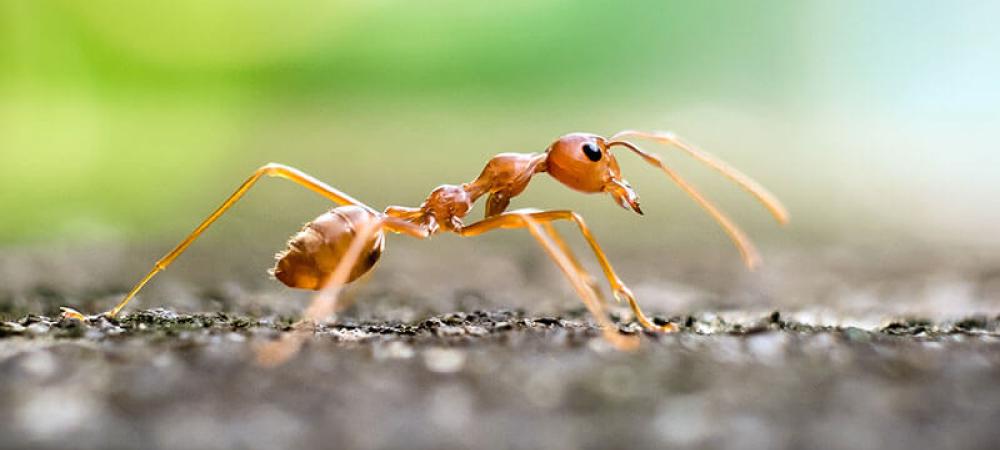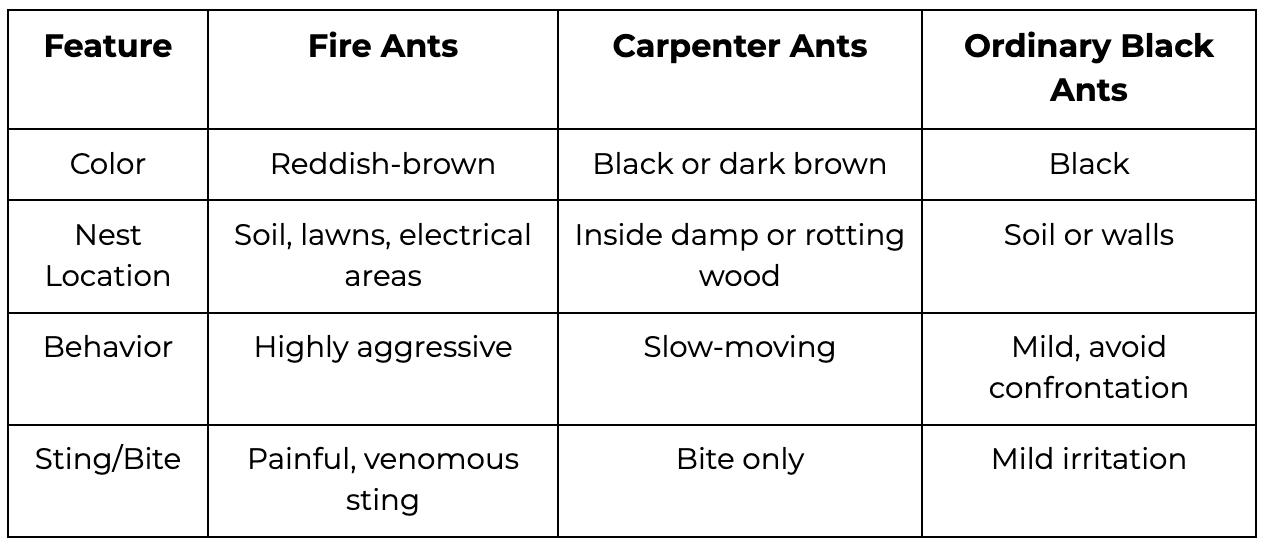Fire Ants: How to Identify, Treat, and Prevent Infestations

Fire ants are more than just a backyard annoyance. In warm, humid areas with sandy soil and long summers, these aggressive insects thrive — turning lawns, playgrounds, and even electrical systems into danger zones. If you’ve ever stepped too close to one of their mounds, you already know why they’re a problem. Their sting burns, their colonies spread quickly, and ignoring them can turn into a costly mistake.
This guide explains how to spot fire ants, why they’re so persistent in this region, and when to call Bug-N-A-Rug for professional treatment.
How to Identify Fire Ants and Their Mounds
Before you treat fire ants, you need to make sure that’s what you’re dealing with.
What Do Fire Ants Look Like?
- Reddish-brown body with darker abdomen.
- About ⅛–¼ inch long, depending on their role in the colony.
- Move quickly and aggressively when disturbed.
What Do Fire Ant Mounds Look Like?
- Dome-shaped, fine-grain soil piles.
- Usually 6–12 inches tall, but can grow larger.
- No visible hole on top — fire ants tunnel in and out from the sides.
- Often found in sunny, open areas like lawns, driveways, sidewalks, and near foundations.
Fire Ants vs. Other Common Ants

What Attracts Fire Ants?
Fire ants don’t just appear at random — they’re drawn to certain conditions that make it easy for them to build, expand, and protect their colonies. If your yard has one or more of the following, it can quickly become a target.
Fire ants are especially attracted to:
- Moist, well-drained soil — especially after rainfall or irrigation. They prefer soft ground that’s easy to tunnel through.
- Sunny, open spaces — lawns, gardens, driveways, and playground areas give them warmth and clear access to food and water.
- Consistent warmth and mild weather — allows colonies to remain active for most of the year instead of going fully dormant.
- Available food sources — including plant seeds, insects, pet food left outside, fallen fruit, and even electrical currents (they’re known to infest wiring and utility boxes).
- Disturbed soil or landscaping projects — construction sites, recently laid sod, and fresh mulch provide ideal nesting conditions.
- Standing water or moisture around the foundation — leaky hoses, clogged gutters, or poorly drained areas create the damp environment they need to survive.
Once fire ants establish a mound, they spread underground through tunnels. A single colony can grow to more than 200,000 ants with multiple queens, allowing them to rebuild or relocate quickly if disturbed. Without early intervention, they don’t just stay in one corner of the yard — they expand to nearby lawns, gardens, and even into electrical systems.
Why You Shouldn’t Ignore Them
Fire ants don’t just ruin lawns — they cause real harm.
Health Risks:
- Stings produce a burning sensation and itchy white pustules.
- Multiple stings can trigger allergic reactions.
- Children, pets, and elderly adults are especially at risk.
Property Damage:
- Build inside outdoor electrical boxes, A/C units, and wiring.
- Undermine soil around driveways, foundations, and landscaping.
- Harm garden plants by feeding on seeds and roots.
DIY Treatments: What Works (and What Doesn’t)
Some homeowner solutions will temporarily scatter ants — others will make them multiply even faster.
Methods That Can Help:
- Bait granules: Worker ants carry poisoned bait back to the queen. Works best when applied around the mound, not on top of it.
- Two-Step Method:
- Broadcast bait across the lawn.
- Follow up with a mound drench or dust two weeks later.
- Ant-specific products from lawn & garden stores (not general bug sprays).
Methods That Backfire or Don’t Work Long-Term:
- Pouring boiling water or gasoline — dangerous, kills grass, and only kills a small portion of the colony.
- Running over mounds with a lawnmower — scatters colonies, creates multiple new nests.
- Home remedies like coffee grounds, grits, or cinnamon — don’t reach the queen.
When It’s Time to Call a Professional
DIY approaches can work on small, isolated mounds. But some situations require expert treatment:
- Multiple mounds or colonies across the yard.
- Ants returning weeks after DIY treatment.
- Fire ants nesting near foundations or electrical systems.
- Stings affecting children, pets, or livestock.
Fire ants won’t go away on their own — and the longer they stay, the more damage they cause. Bug-N-A-Rug offers targeted treatments that eliminate the entire colony, including the queen, and help protect your property long-term.
Ready to reclaim your yard? Get in touch today to schedule professional fire ant control.

